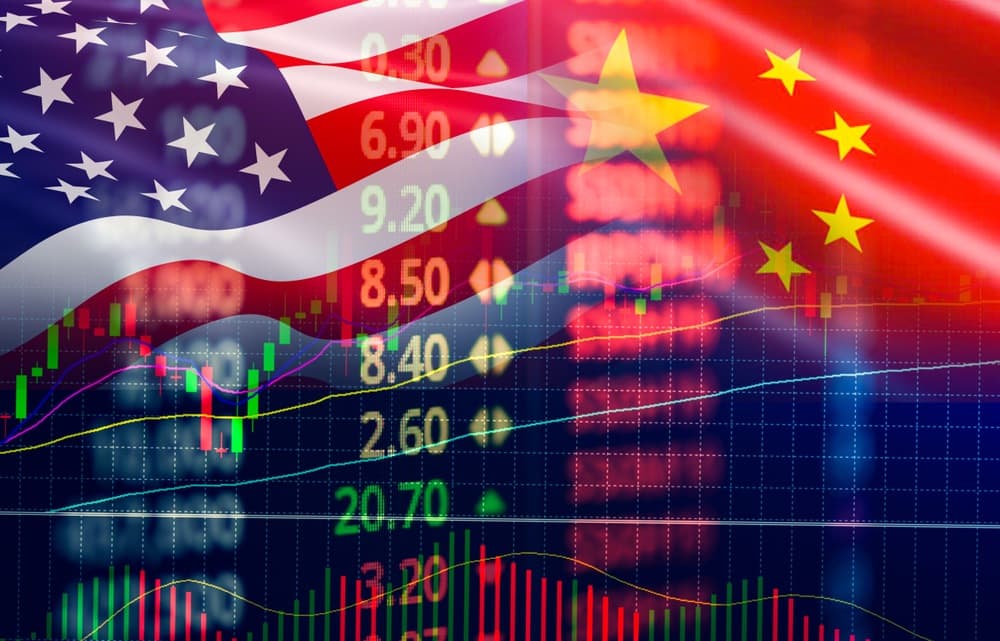
Wall Street’s week is ending with a kind of lottery logic: big money shuffling among indexes while individual names swing like ping pong balls in a Powerball machine.
Stocks pushed the S&P 500 to yet another record ahead of this morning’s big jobs report.
While reviewing the indices this morning, we notice this curious unison:

(Click here to view larger image.)
The indexes don’t always move this clearly in unison, but when they do, thank big tech
(Source: Google Gemini)
This kind of synchronized buying is more likely institutions putting money to work than retail investors chasing memes. Although retail investors trading options on ETFs are also likely to play a role, suggests Andrew Packer.
Tesla gave the market its sideshow. The company’s board outlined a new pay package for Elon Musk that could be worth $1 trillion if Tesla’s market cap balloons from $1 trillion today to $8.5 trillion within a decade.
Nice work if you can get it. Musk doesn’t even need to buy a Powerball ticket — though the rest of us are lining up for Saturday’s $1.7 billion jackpot.
Meanwhile, Nvidia is down for the fifth day in the past six following its earnings miss, showing just how fragile even the hottest stories can be once expectations are sky-high – and earnings numbers are only “good enough.”
 The Jobs Machine Sputters
The Jobs Machine Sputters
The big number this morning: Employers added only 22,000 new jobs in August, far below forecasts.
The unemployment rate ticked higher, while June and July were revised downward. Manufacturing was especially weak, shedding 12,000 jobs in August and 78,000 for the year. Not precisely what tariffs were supposed to deliver.
Silver linings? Layoffs were relatively low. Consistent with our observation yesterday that “construction quits” are at 2008 financial crisis lows.
Those who’ve lost jobs are struggling to get rehired — continued unemployment claims have been elevated since April.
ADP’s payroll data showed just 54,000 private-sector jobs created last month, with health care — the growth engine of the past year — suddenly cooling. (Small wonder there… see another three charts below.)
“The number of unemployed people surpassed the number of available jobs for the first time since the spring of 2021,” The New York Times noted.
These imbalances were last observed during the run-up to the 2008 financial crisis.
 Dividends Over Day Jobs
Dividends Over Day Jobs
With the labor market cooling, Gen Z is looking for exits.
Instead of chasing promotions, they’re piling into dividend stocks and high-yield ETFs. The theory: better to collect passive income than grind out a 9-to-5 in an economy where AI is eating whole careers.
As Mark Jeftovic bluntly put it recently on Grey Swan Live!, the influence of the AI economy will be profound: “In the future, we won’t have jobs. We will only be managing wealth that has been left to us.”
 The Fed’s New Man at the Table
The Fed’s New Man at the Table
Sluggish jobs numbers no doubt make the 96% of analysts expecting a quarter point interest rate cut on September 17 even more resolute.
Tracking Trump’s Shadow Fed, we notice Stephen Miran, one of Trump’s top economic advisors and an architect of tariff policy, is now poised to join the Federal Reserve Board.
At his Senate hearing yesterday, he promised to respect Fed independence. Heh. Democrats weren’t buying it. Not that you’d expect them to have another opinion.
Pressed on Trump’s claim that the Bureau of Labor Statistics has been “rigging” job numbers, Miran dodged. He sidestepped questions about the 2020 election, too. And with Fed Governor Lisa Cook suing Trump over her firing last week, the prospect of Miran taking her seat is stirring fresh fears about the Fed becoming just another political arm of the administration.
Goldman Sachs warns that if Fed independence cracks, dollar confidence could erode — fast. Gold is already trading above $3,600, and Goldman sees $5,000 in sight if the world starts swapping just 1% of their Treasury holdings for bullion. (Look for more insight on Miran in today’s Beneath the Surface email.)
One obvious reason for Fed drama…
 A World in Debt, redux
A World in Debt, redux
The global bond market is screaming.
This week, 30-year yields hit multi-decade highs across the U.S., UK, Germany, and Japan.
America’s 30-year briefly touched 5.0% — levels last seen in 2007. Japan’s long bond is at its highest since it was first issued in 1999. Europe’s long paper is flirting with crisis-era yields.
Why? Heavy borrowing, fiscal deficits.
In just two months, U.S. federal debt has surged by $1 trillion. Since mid-August alone, $200 billion has been tacked on.
Every central bank is easing, but markets want higher yields to cover runaway deficits and the prospect of resurgent inflation. That means Washington is stuck fighting yield-curve control while other governments scramble to do the same.
But the problem isn’t just Uncle Sam’s hard addiction to debt. It’s a global pandemic. For a constructive view of the world’s current debt-crisis-in-the-making, we recommend reading today’s free offering from Global Markets Advisor on Substack, right here.
 Silicon, Tariffs, and the New Tech Wars
Silicon, Tariffs, and the New Tech Wars
Broadcom is teaming up with OpenAI to design a new AI accelerator chip to challenge Nvidia.
Sam Altman, Mark Zuckerberg, Bill Gates, and Tim Cook dined at the White House last night, pledging to deepen U.S. AI investment.
Trump, of course, hinted at “fairly substantial” new tariffs on chip imports. Apple, he said, would “be in pretty good shape.”
 Department of War Returns
Department of War Returns
Today, Trump is signing an executive order to rename the Department of Defense back to the Department of War — a title not used since the 1940s.
While he boasts about ending conflicts abroad, U.S. activity tells a different story. Warships are steaming into the Caribbean, after American drones killed 11 aboard a Venezuelan vessel last week. Jets buzzed a U.S. destroyer days later. Chile and other Latin nations are pleading for calm.
Meanwhile, Washington has put a $50 million bounty on Nicolás Maduro’s head and is weighing new bases in Ecuador. The age of Pax Americana has a C-35 air cargoload of BGM-109 Tomahawk missiles ready to deploy globally at a moment’s notice.


 Bureaucratic Bloat in Everyday Life
Bureaucratic Bloat in Everyday Life
Our crack research team came up with another three charts that show an immense business opportunity for AI vibe coders:

(Click here to view larger image.)
Healthcare, education, and housing all show how bureaucratic bloat distorts costs. The first two are deeply dependent on government subsidies, mandates, and debt financing. (Source: BLS; Dept. of Ed; Andrew Packer)
Housing is certainly less bureaucratic, but as contributor John Rubino notes, three looming dominoes could topple the housing market too: aging Baby Boomers looking to downsize, failed Airbnb landlords, and private equity firms unloading rental portfolios.
With mortgage rates still above 6% and affordability at record lows, it’s no longer if housing rolls over, but when.
Powerball for the People 
While Musk is on track for a trillion-dollar payday, Americans are lining up for tomorrow’s Powerball drawing — the third largest in U.S. history, at $1.7 billion.
Odds of winning? 1 in 292.2 million.
Odds that Musk hits his Tesla targets? Slimmer still, but Wall Street is already marking him as the winner.
~ Addison
P.S. “Bitcoin is more speculative than Ethereum.”
That was just one of the many huge predictions Ian King made on yesterday’s Grey Swan Live!
Thanks to all of you who joined us at our new time: 2 p.m. ET!
You owe it to yourself to understand decentralized finance (DeFi) now.
As Ian said, “It’s as powerful a disruptive innovation in banking as Netflix was to Blockbuster in the movie industry.”
Given the rapid changes in the world today, the focus on AI, and the disruption in the labor markets, now is your time to invest in the assets that can carry you through the uncertainty ahead.
If you’re not already a member, Grey Swan Live! is worth the price of membership alone. Sign up here to get our full insights each week!
Your thoughts? Please send them here: feedback@greyswanfraternity.




